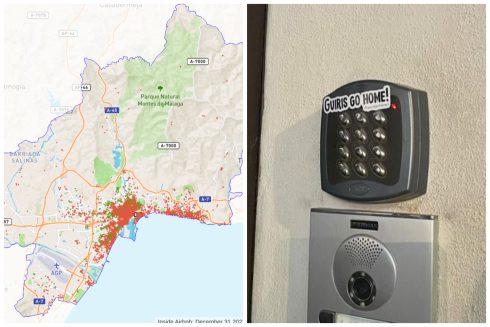THE province of Malaga still has 20 municipalities classed as being at an ‘extreme risk’ for coronavirus.
Despite a generalised drop in infection rates in Andalucia, there are still areas which register a cumulative incidence rate of more than 250 cases of per 100,000 inhabitants.
The 20 Malaga districts still in the red zone are: Cuevas del Becerro, Alpandeire, Algatocin, Gaucin, Juzcar, Alameda, Cortes de la Frontera, Alfarnatejo, Montejaque, Archidona, Ronda, Humilladero, Casabermeja, Arenas, Benaojan, Jimera de Libar, Antequera, Benamocarra, Alora and Archez.
Additionally, there are a further 15 towns in Andalucia with an extremely alarming cumulative incidence of more than a thousand cases per 100,000 inhabitants, which include the following municipialities: Cuevas del Becerro (records an incidence of 10,132 cases), Ragol (Almeria), Fuente-Tojar (Cordoba), Alpandeire, Huelago (Granada), Alcala del Valle (Cadiz), Cardeña (Cordoba), Orcera (Jaen), Darro (Granada), Montejicar (Granada), Íllar (Almeria), Algatocin, Badolatosa (Sevilla), Villamena (Granada) and Gaucin.
In general, however, the majority of Andalucia has been able to reduce the cumulative incidence rate below the level considered ‘extreme risk’.
After more than five weeks of restrictions throughout the region, starting at the end of October with the closure of external borders, Junta spokesman Elias Bendodo said on Sunday that ‘we have managed to reduce the infection curve.’
The Junta maintains five levels depending on the incidence of the coronavirus in a given municipality: minimum, low, medium, high and extreme risk.
Overall, official figures suggest that the majority of Spain has come out of the extreme risk level by lowering the average incidence to below 250 cases per hundred thousand inhabitants.











